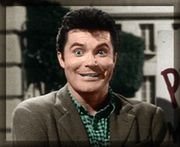From The Times Online:
Despite the recent spate of shootings on our streets, we pride ourselves on our strict gun laws. Every time an American gunman goes on a killing spree, we shake our heads in righteous disbelief at our poor benighted colonial cousins. Why is it, even after the Virginia Tech massacre, that Americans still resist calls for more gun controls?
The short answer is that “gun controls” do not work: they are indeed generally perverse in their effects. Virginia Tech, where 32 students were shot in April, had a strict gun ban policy and only last year successfully resisted a legal challenge that would have allowed the carrying of licensed defensive weapons on campus. It is with a measure of bitter irony that we recall Thomas Jefferson, founder of the University of Virginia, recording the words of Cesare Beccaria: “Laws that forbid the carrying of arms . . . disarm only those who are neither inclined nor determined to commit crimes . . . Such laws make things worse for the assaulted and better for the assailants; they serve rather to encourage than to prevent homicides, for an unarmed man may be attacked with greater confidence than an armed man.”
One might contrast the Virginia Tech massacre with the assault on Virginia’s Appalachian Law School in 2002, where three lives were lost before a student fetched a pistol from his car and apprehended the gunman.
Virginia Tech reinforced the lesson that gun controls are obeyed only by the law-abiding. New York has “banned” pistols since 1911, and its fellow murder capitals, Washington DC and Chicago, have similar bans. One can draw a map of the US, showing the inverse relationship of the strictness of its gun laws, and levels of violence: all the way down to Vermont, with no gun laws at all, and the lowest level of armed violence (one thirteenth that of Britain).
America’s disenchantment with “gun control” is based on experience: whereas in the 1960s and 1970s armed crime rose in the face of more restrictive gun laws (in much of the US, it was illegal to possess a firearm away from the home or workplace), over the past 20 years all violent crime has dropped dramatically, in lockstep with the spread of laws allowing the carrying of concealed weapons by law-abiding citizens. Florida set this trend in 1987, and within five years the states that had followed its example showed an 8 per cent reduction in murders, 7 per cent reduction in aggravated assaults, and 5 per cent reduction in rapes. Today 40 states have such laws, and by 2004 the US Bureau of Justice reported that “firearms-related crime has plummeted”.
In Britain, however, the image of violent America remains unassailably entrenched. Never mind the findings of the International Crime Victims Survey (published by the Home Office in 2003), indicating that we now suffer three times the level of violent crime committed in the United States; never mind the doubling of handgun crime in Britain over the past decade, since we banned pistols outright and confiscated all the legal ones.
We are so self-congratulatory about our officially disarmed society, and so dismissive of colonial rednecks, that we have forgotten that within living memory British citizens could buy any gun – rifle, pistol, or machinegun – without any licence. When Dr Watson walked the streets of London with a revolver in his pocket, he was a perfectly ordinary Victorian or Edwardian. Charlotte Brontë recalled that her curate father fastened his watch and pocketed his pistol every morning when he got dressed; Beatrix Potter remarked on a Yorkshire country hotel where only one of the eight or nine guests was not carrying a revolver; in 1909, policemen in Tottenham borrowed at least four pistols from passers-by (and were joined by other armed citizens) when they set off in pursuit of two anarchists unwise enough to attempt an armed robbery. We now are shocked that so many ordinary people should have been carrying guns in the street; the Edwardians were shocked rather by the idea of an armed robbery.
If armed crime in London in the years before the First World War amounted to less than 2 per cent of that we suffer today, it was not simply because society then was more stable. Edwardian Britain was rocked by a series of massive strikes in which lives were lost and troops deployed, and suffragette incendiaries, anarchist bombers, Fenians, and the spectre of a revolutionary general strike made Britain then arguably a much more turbulent place than it is today. In that unstable society the impact of the widespread carrying of arms was not inflammatory, it was deterrent of violence.
As late as 1951, self-defence was the justification of three quarters of all applications for pistol licences. And in the years 1946-51 armed robbery, the most significant measure of gun crime, ran at less than two dozen incidents a year in London; today, in our disarmed society, we suffer as many every week.
Gun controls disarm only the law-abiding, and leave predators with a freer hand. Nearly two and a half million people now fall victim to crimes of violence in Britain every year, more than four every minute: crimes that may devastate lives. It is perhaps a privilege of those who have never had to confront violence to disparage the power to resist.
Not that this kind of absolutely irrefutable reasoning will actually have any effect over there, but it is damn good to see someone making the effort.
Sunday, September 09, 2007
Someone on the other side of the Atlantic has a functioning brain
Posted by
Lemuel Calhoon
at
6:16 PM
![]()
Labels: Europe, Gun Control
Subscribe to:
Comment Feed (RSS)










|